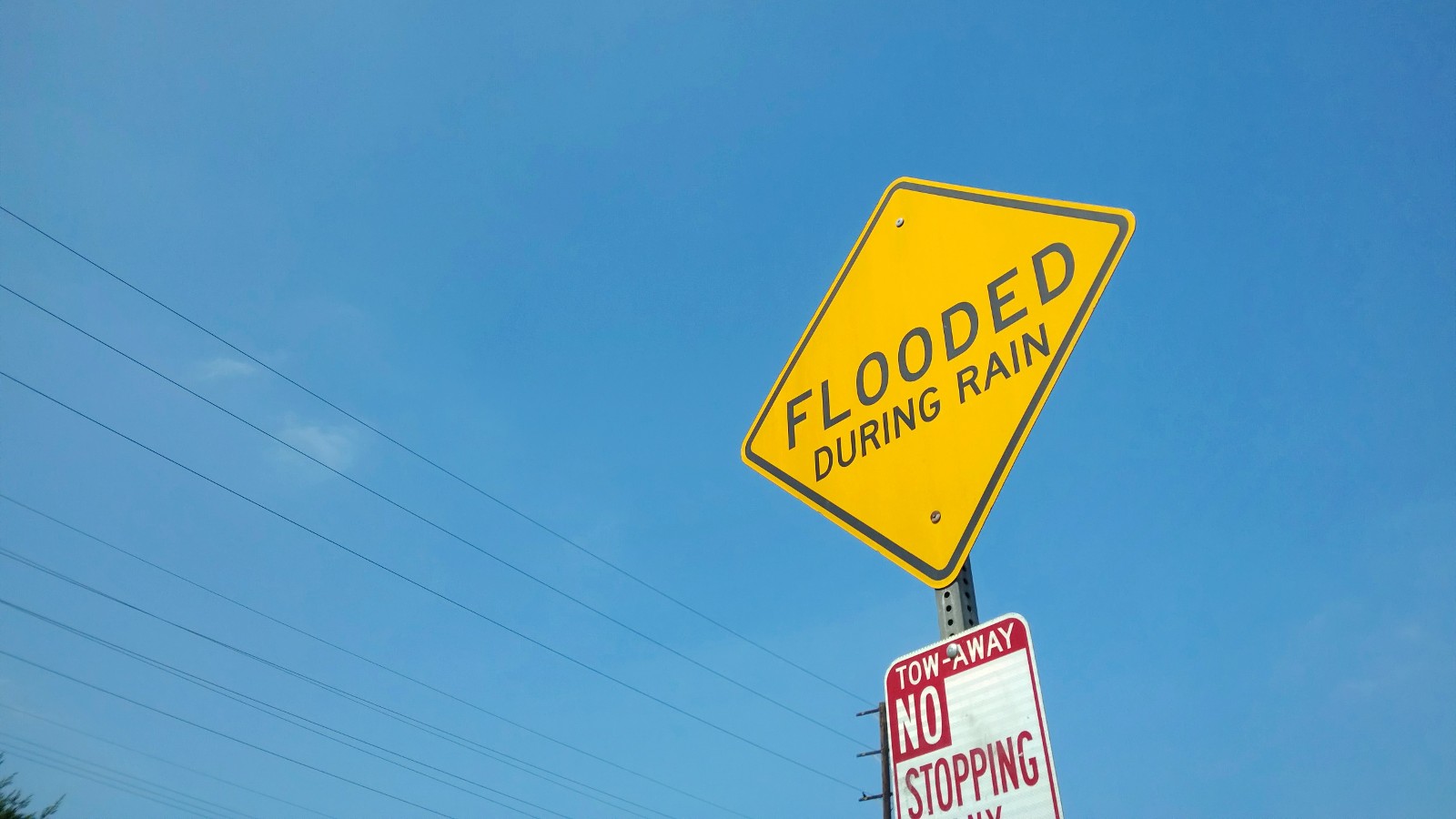When it comes to storm damage, Los Angeles County may not be the first place that comes to mind. But according to a new study, the area’s “hundred-year” flood risk is far greater than what the federal government currently estimates — and a disproportionate danger for Black residents in certain key areas.
The Federal Emergency Management Agency considers a relatively small section of L.A. County to be at high risk of flooding. Researchers estimated that these tracts — mostly along the coast and around Lake Los Angeles — are home to just over 23,000 people. These zones would be especially vulnerable during a so-called “100-year flood” — an event with a 1 percent chance of occurring in any given year. But while FEMA only bases its assessment on potential flooding along rivers and coasts, a team at the University of California, Irvine identified additional high-risk areas based on the flash flooding caused by rainfall. This inclusion, they argued, is crucial, as global warming will increase the volume of runoff, and there’s often insufficient drainage in urban areas.
According to the resulting analysis, published Monday in Nature, up to 874,000 people in the county could be exposed to a similar level of flood risk — a nearly 40-fold increase from the population estimate based on government assessments.
And it may not just be L.A. County that is vastly underestimating its flood risk: “Across the U.S., we witnessed one city after the other get hit by flooding and be seemingly unprepared for the amount of flooding that happens,” said Brett Sanders, a professor of civil and environmental engineering at UC Irvine and the study’s lead author.
In addition to noting the increased risk, Sanders said it is crucial to understand who within a community is most exposed to these types of events and may face the longest road to recovery. The team at UC Irvine measured the likelihood of different groups in L.A County experiencing each type of flooding — coastal, river, and flash flooding — based on measures of vulnerability, such as race, ethnicity, and socioeconomic status.
The researchers found that the county’s non-Hispanic Black residents are 79 percent more likely than non-Hispanic white residents to be exposed to flooding greater than 100 centimeters, roughly three feet. Hispanic residents are 17 percent more likely to be exposed to these levels of flooding when compared to non-Hispanic white residents, and Asian residents are 11 percent more at risk.
The hope, Sanders said, is for communities across the country to replicate this type of analysis in order to better understand where governments should focus flood mitigation or recovery efforts.
These flood events “wreak a lot of havoc,” he said, adding that federal flood assistance programs often fail to reach those who need it most. That’s because those programs often look to states, which in turn often distribute support to communities that already have the resources to advocate for it.
“If you’re living paycheck to paycheck, and you’re renting your apartment — your employer may go out of business, your housing may be unlivable, and you’ll quickly find your life really upended and unable to recover,” Sanders said. “We have a problem in the U.S. because the most vulnerable communities have no resources and have very little expertise to ask for help. So we don’t know where the hotspots of vulnerability are across the United States. We only know of and hear from the communities that have resources to ask for help.”
Sanders and his team have made their data and analysis public to encourage communities around the country to replicate their model to better understand urban flood risk on a neighborhood level.
Still, “this type of tool can’t be the last work on where money needs to go,” he said.



